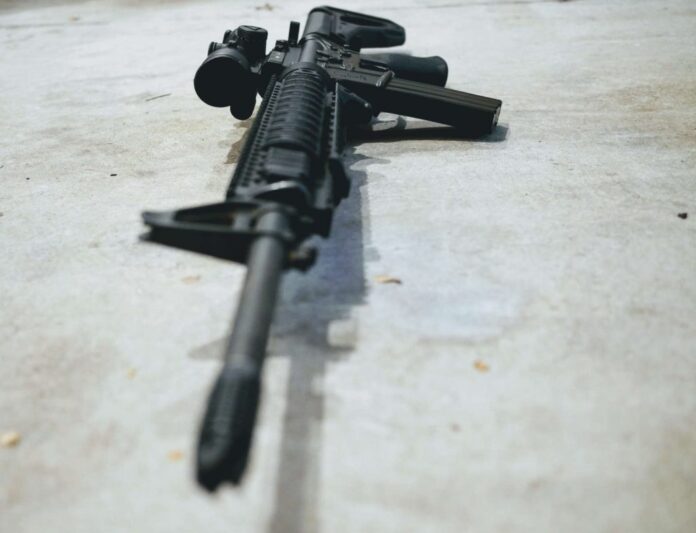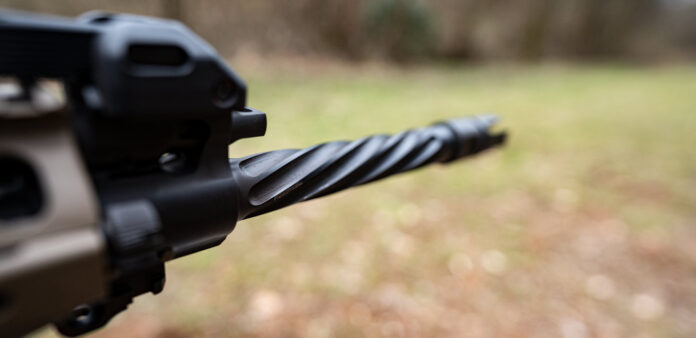Due to the great possibility to customize the rifle up to your preferences, the AR-15 is one of the favorite rifles of many. However, while other components are easier to choose, selecting the right barrel is the most difficult part of optimizing your AR.
There are lots of companies who put effort and money into campaigns to convince you that their barrel is the right thing for you, but that is not always the case. You have to be careful because the functionality and accuracy of your rifle depend on the barrel, but also on the legality.
For that reason, we made this article to explain what are the best materials for an AR-15 barrel. This should help in the customization process of your next build to create a rifle that will make shooting a pleasure. Keep reading and find out more.
Materials

The greatest indicator of whether a barrel will provide you with the features you look for is the material. While there are lots of different materials, they can be divided into these two categories.
Stainless steel
When you see a shiny tube, you are most likely looking at a stainless steel one. Some people think the selection is based on taste and how will your rifle look, but there are lots of reasons why are these barrels so popular.
The major advantage of carbon materials is that they are more resistant to rust. This makes them highly suitable for wet conditions. However, even though they resist corrosion, if not maintained properly, they can still oxidize.
If you are looking for a stainless-steel product, consider going for the 416r. They are strong and they work perfectly fine even in temperatures below zero. Even though they are slightly pricier, you can expect longevity and accuracy.
Carbon
While we are talking about carbon, be sure to understand these barrels are an alloy of carbon and steel. Both the steel and the carbon, as well as other elements, are put in a furnace until they melt and combine.
Depending on the percentage of carbon, that is how strong the barrel will be. So, if we are talking about five percent of carbon, that is a 4150 mark. However, when you add vanadium into the mixture, you are getting a product that is both durable and reliable which results in long years of use and lots of rounds fired.
What material should you choose
When we talk about which of these materials should you choose, that completely all upon your preference and budget as well. For that reason, if you are looking for an affordable product, consider stainless steel. But if you are looking for the ultimate barrel material, then the 4150 with the added vanadium should be your choice, as suggested by https://midstatefirearms.com/product-category/ar15-ar10/upper-receivers-parts/barrels/
Barrel types
When looking to upgrade your rifle, you can simply pick any barrel that fits the caliber. However, with different barrel types, there are different characteristics you might want to use and experience. That is why it is important to understand the tube types completely and create an AR up to your preferences.
CHF

The first type is AR barrels who are forged by cold hammers on all sides. This method includes a blank barrel with a tapered cylinder inside. The hammers are hitting the tube on all sides, and the imprint of the cylinder is transferred or forged on the inside of the tube. That is how the rifling is created.
The good sides of the CHF are that they withstand more heat, and last longer than other barrel types. However, they might not be as accurate as some of the other types.
Cutting-rifle method

This is the first way of producing gun barrels in history, which is now improved by using modern machines. During the production process, the tube rotates and there is a hook inside it creating the rifling. To create even rifling, the hook is passed multiple times through the tube.
The good sides of the cut-rifle production are creating even rifling and a consistent rate of twists. In addition, the tube is not exposed to stress and wear during its production. All these results are in extremely accurate barrels.
On the other hand, the production process can be extremely expensive, and slow. Because of that, you cannot scale this rifling method for assembly-line production.
Button-made

This is the quickest way to mass-produce AR 15 barrels. The rifling is done using an extremely firm button that has negative rifling on it. By pushing or pulling the button through the tube, the rifling is getting transferred to the inside.
The good side of barrels made using a button is that they are quick to be produced since the button needs to go through the tube one single time. Because of that, they are affordable and available for everyone to purchase them.
The bad sides include mandatory stress protection during production. Also, some products come with low quality and inaccuracy due to their small price.
Coatings

Since no barrel is left uncoated, it is important to understand which coating is best for your rifle. For that reason, we prepared a small list of finishes to know exactly what to look for in your build.
Chrome
Chromated barrel profiles provide longevity with lots of rounds fired, as well as withstanding bad weather conditions. It is important to understand that the chrome is not applied on the exterior of the tube, but rather on the inside which is why it is so important.
Phosphates
Adding a phosphate layer on top of the barrel was something first implemented during the second world war. With that, if it was good for military operations, it should be good for gun enthusiasts as well. The phosphates are protecting the rifle from corrosion, and do a great purpose of keeping oil.
Nitride
Lastly, we have the nitride coating which provides lots of protection since it is applied both on the inside and outside of the barrels. It provides great protection against rust, and the black color simply looks great.
In addition, the application on the outside of the gun prevents scratch marks and damage from gun falls. However, if exposed to uncontrolled temperatures, you can expect your barrel to withstand damage sooner than expected.
Conclusion
With lots of different options that you can choose from, finding the perfect AR barrel should be easy for you. Just know what you are looking for and the rest is easy. By selecting a material like the 4150 mixture of steel, carbon, and vanadium, you can expect longevity and lots of enjoyment during your range shootings.








